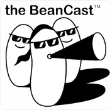Is your content invisible?
This is a question that plagues me. Because while each episode of The BeanCast is filled with great information and fascinating debates, none of this is natively discoverable. You can certainly piece together the fact that a certain person was on the show and was involved in a specific discussion because of the show notes I post, but the things that were said and the tenor of the conversation is mostly lost to search.
This dilemma is only going to increase as video and image-based content further eclipses text as the de facto standard of communication on the Internet. Currently we rely on keywords in descriptions to generate awareness for our visual posts. But to truly optimize views we need to be much more aggressive. Here are just a few ideas:
Sharing
From the moment we plan and script our visual and audio content, we need to be thinking about what makes it shareable. Making visual content discoverable in a social world is dependent on viewers/listeners sharing insights in text that is associated with your link. Always be thinking about what will motivate your audience to share, then provide the easiest possible means for them to do so.
Transcripting
I’ve struggled with this need. It seems like a frivolous extra cost that will hardly ever be read or used. But associating your visual and audio content with complete transcripts provides you with a wealth of search value and opens up more of the content to discoverability. It’s also another content resource that can be shared and attributed to you, so it’s worth the effort. (Talking to myself here as well.)
Discussing
Creating conversation around your content, through comments on posts and discussion in social media, is a great way to introduce volumes of searchable keywords. Just make sure to balance these conversations to include places that map to all possible areas of discoverability. Facebook and Twitter are important for discussion, but Google is blind to this in-bound linking and keyword data. So make sure to include conversations in places that all the search paths can see.
Promoting
Old media still matters. One of my biggest traffic spikes in listenership came from a promotional link associated with an article I had published in the print edition of Ad Age. If something is said in your visual/audio content that is relevant to a news cycle, get the word out through your public relations channels, packaged in a resource that journalists and producers can use.
So what other ideas do you have? This is an ongoing discussion in its own right. So how would you generate added search value to your own visual and audio content? The comment box is below, so have at it.




